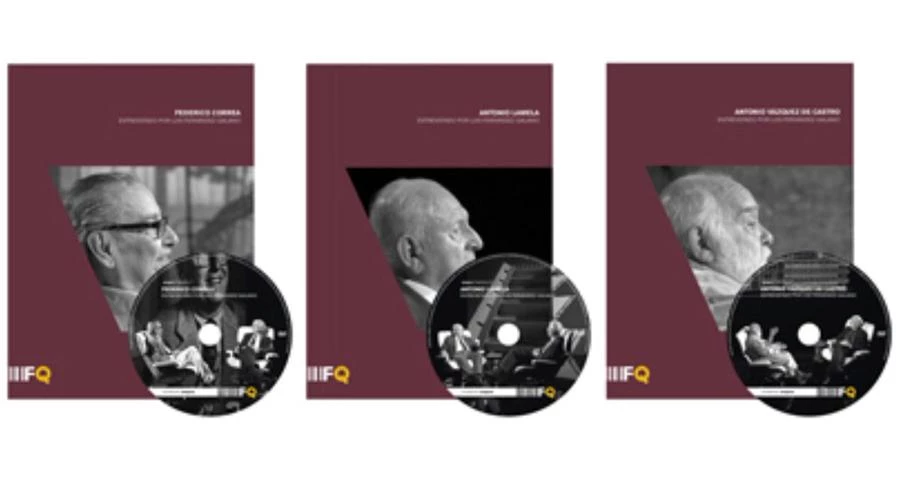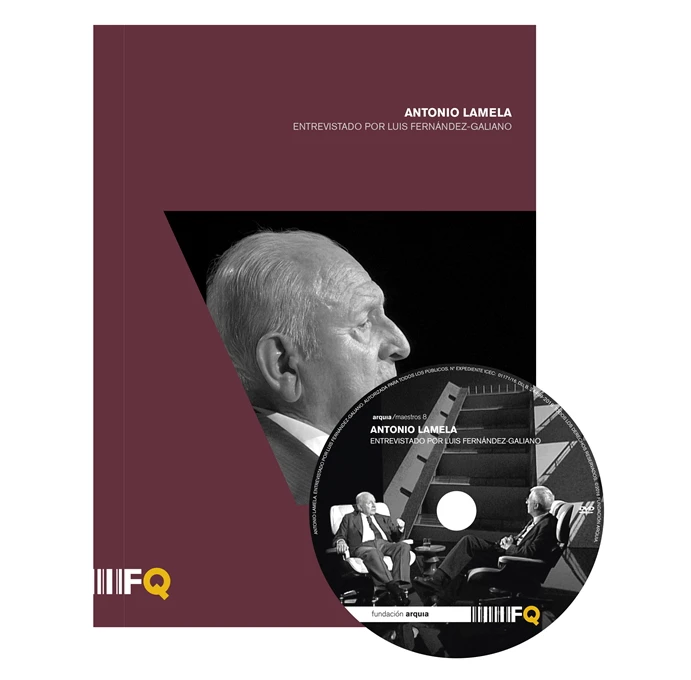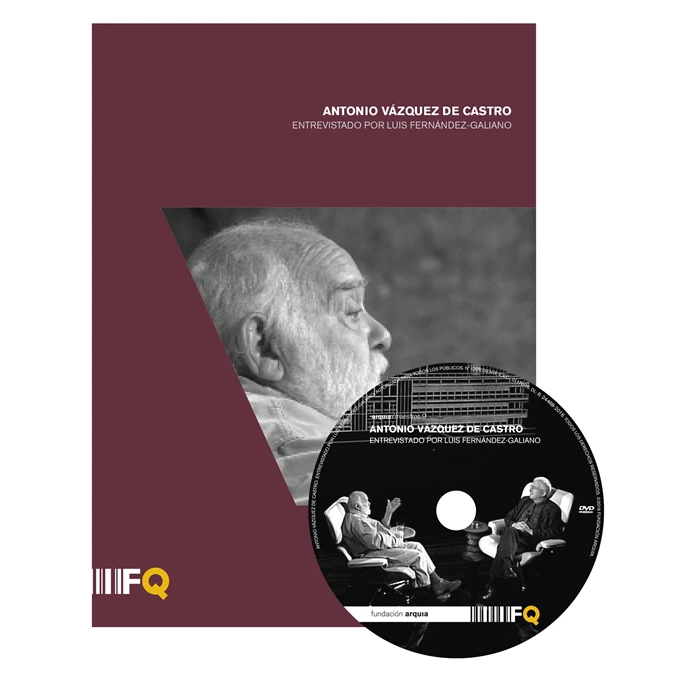
Federico Correa (Barcelona, 1924), Antonio Lamela (Madrid, 1926), and Antonio Vázquez de Castro (Madrid, 1929) are the third trio of the arquia/maestros series of DVDs on important figures of Spanish architecture. For the two previous sets of audiovisual monographs, the director of the project, Luis Fernández-Galiano, interviewed Oriol Bohigas (Barcelona, 1925), Rafael Moneo (Tudela, 1937), Juan Navarro Baldeweg (Santander, 1939), Antonio Fernández Alba (Salamanca, 1927), Manuel Gallego (Carballino, Orense, 1936), and Ricardo Bofill (Barcelona, 1939).
Federico Correa
A fine draftsman, endowed with a cosmopolitan talent that has its roots in his childhood in the Philippines, Federico Correa’s professional career is inextricably linked to those of his friend and partner Alfonso Milà and his contemporary and intellectual peer Oriol Bohigas. In the interview conducted by Luis Fernández-Galiano, a run-through of his trajectory is made, starting with early works in Cadaqués, where he built houses inspired in the popular architecture he had learned from José Antonio Coderch. The young practice of Correa and Milà would later consolidate with industrial buildings like the Montesa factory in Cornellá and the Godó y Trias plant in Hospitalet, and residential buildings in Barcelona as visible as the Atalaya, which shows his familiarity with contemporary Milanese architecture, and this Italian connection is also present in the seeds of his interior design projects, in the Olivetti store or in restaurants like Flash Flash or Il Giardinetto. With democracy came public commissions, from the redevelopment of the Plaza Real to the refurbishment of the Olympic Ring, his journey eventually leading him deep into Catalonia with the Episcopal Museum of Vic, where the vernacular modernity of his early houses are reinterpreted on an appropriately medieval note. .
Antonio Lamela
An architect, builder, and developer, Antonio Lamela inherited from his father the practical intelligence and exacting discipline that explains the continued success of his career since his very first work, the rational and elegant apartment building at O’Donnell 33, which would serve as a laboratory for subsequent projects of his, among them the large hotels and tourist residential complexes erected along the Costa del Sol and in Mallorca. But it was Madrid that saw his most important works go up, works of such scale and visibility that they contributed to the shaping of the city’s image, from Hotel Meliá on Calle Princesa or the Galaxia complex to the innovative Colón towers, the iconic Pirámide building, the renovation of Santiago Bernabeu Stadium, or the stunning Terminal 4 at Barajas Airport, in the latter case in association with the British Richard Rogers. This rich resumé, described in the interview with Luis Fernández-Galiano, lives on with Estudio Lamela turned into a large company enjoying significant projection abroad, while its founder continues to address his personal concerns, including as a visionary pioneer of ecology and globalization.
Antonio Vázquez de Castro
Educated in the mythical Instituto Escuela and later a pupil of the sculptor Ángel Ferrant, young Vázquez de Castro was deemed the Wunderkind of his generation, and at the age of 28 he received the commission that would mark his career, the Poblado Dirigido de Caño Roto, which he executed with his partner, José Luis Íñiguez de Onzoño, as a neo-realist tapestry of courytard houses, a ‘suburban Alhambra’ that would be widely publicized outside Spain. The interview conducted by Luis Fernández-Galiano, which goes through De Castro’s career starting from that happy beginning, shows how the constructive rigor and ceramic austerity learned there would fertilize his educational and residential buildings of subsequent years, and would also have a bearing on the academic, professional, and political responsibilities that he would take on during Spain’s transition to democracy, as chair professor at the School of Architecture of Madrid (ETSAM), dean of the Madrid Institute of Architects (COAM), and director-general of architecture in the socialist government of Felipe González. His stubborn devotion to housing would in the 1990s give way to the undertaking of singular buildings like the one at Seville Expo or the conversion of the old hospital at Atocha into the Reina Sofía Museum and Art Center, and his drive to innovate, patent in the early project for the Previ in Lima, continues today with the visionary linear city that he has proposed for the coastal strip of the south Mediterranean. arquia/maestros





